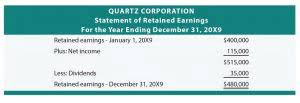Our Product Development Team will receive and review your suggestion along with the other user requests. Modifying your Audit Trial and Transaction reports to show only one user isn’t possible in QuickBooks Desktop (QBDT). Just click the Reply button below if you have any other questions or follow-up questions.
- To access the audit trail report, go to the Reports menu in QuickBooks Desktop, select Accountant & Taxes, and then choose Audit Trail.
- In case of any query you can always reach out to the experts.
- Dates and times in the Audit Log and Audit History reflect when events occurred, displayed in your local time.
- This feature allows users to track changes made to transactions, including the date and time of modifications, as well as the user responsible.
- Follow the onscreen prompts once you click the Enable button.
Step 1: Open the Audit Trail Report
This process offers valuable insights into the financial history of the company and facilitates thorough monitoring and analysis. Once the report qbo login is generated, you can filter it by date, user, or transaction type to pinpoint the relevant information. It serves as a safeguard, allowing businesses to maintain accuracy and comply with accounting regulations while offering a comprehensive insight into the financial operations. The Audit Log contains a list of all the changes that have ever been made to your company data and by whom. Contact me or another one of Kaufman Rossin’s QuickBooks ProAdvisors to learn more about how to use the audit log report. QuickBooks Online keeps track of your activities in the audit log.
How to View the Audit Trail in QuickBooks Desktop
- Your web browser’s “Print” dialog box also opens, letting you easily print the audit log.
- Reviewing this regularly ensures your financial data remains accurate and audit-ready, especially during preparation of your business taxes or compliance checks.
- The audit log in QuickBooks Online Plus lets you view all the changes made in your company file and who made them.
- Just type your concern in the search field and this page will route you to the related help articles, Community discussions, video tutorials and more.
- Once in the QuickBooks Desktop software, users can navigate to the Reports menu and then select the Accountant & Taxes option.
- I recognize the importance of tracking users‘ activities and identities using IP addresses, especially when working on multiple workstations or devices.
Hence, when company files are condensed, the audit trail related to closed transactions https://www.bookstime.com/ is removed. To access the audit trail report, go to the Reports menu in QuickBooks Desktop, select Accountant & Taxes, and then choose Audit Trail. Customize the transaction history report to tailor the displayed information according to specific date ranges, transaction types, or other relevant parameters within QuickBooks Desktop. By default, the report is sorted by user, date range, and event type (transactions, lists, sign in/sign out, templates, etc.). Users may further filter and sort the data to meet their specific needs.
How to View Audit Trail in QuickBooks?
To access the transaction history, users can navigate to the Reports menu and select Custom Transaction Detail Report. From there, they can customize the report by adjusting date ranges, choosing specific accounts, and tailoring the layout to suit their specific needs. This allows for a more detailed and tailored view of the financial transactions within QuickBooks Desktop. In the world of accounting and financial management, maintaining an accurate record of transactions is crucial. This is where the audit trail in QuickBooks Desktop comes into play. In this article, we will delve into the significance of the audit trail and the various ways to access and utilize it effectively.
How to Run an Audit Trail in QuickBooks Desktop?
- QuickBooks is solely designed which helps multiple users to access the data file by using the function of an audit trail in QuickBooks.
- We can rush the process and diminish the cost of an audit by maintaining clear records of all transactions.
- Your deleted transaction history is located in the ‘Reports’ section under ‘Audit Trail’.
- Sign up to receive more well-researched small business articles and topics in your inbox, personalized for you.
- By following these steps, you can easily check your QuickBooks transaction history.
- If you have ever got stuck in the same situation, use a substantial function of QuickBooks i.e. ‘Audit Trail’ by turning it on.
- Now that you can answer the question, “Where is the audit log in QuickBooks Desktop?
In the “Filter” tab, choose “Transaction Type” on the left side of the screen. From here, you can filter your bookkeeping audit trail report by specific criteria. Now that you can answer, “Where is the audit log in QuickBooks Desktop? ” you can view your detailed transaction history report with ease. Or a list of potential apps that integrate with QB Enterprise 2019 for tracking user activity? I searched in the app store and nothing came up when entering „User Activity“ as suggested in this thread above.
The transaction history in QuickBooks offers a complete overview of your financial activities. Users can track changes to individual transactions, such as payments, invoices, and sales. This helps users identify discrepancies and track any unauthorized changes. By accessing the transaction journal, you can get a detailed snapshot of all entries.
How to See Who Entered a Transaction in QuickBooks Desktop?
As a way around, you’ll want to export your reports to MS Excel and modify it from there to only show your preferred user. The ability to track user login and logout information should be very simple. Learn to find QBWin.log or QuickBooks.log files to help you determine the cause of certain errors in your QuickBooks Desktop company file. See articles customized for your product and join our large community of QuickBooks users. Since we’re unable to suggest which application is best for you and your business, I recommend searching through a web search engine. You can visit the third party’s website or customer service support to determine if they integrate with QuickBooks.
Finally, click the Set Date/Password button, and then follow the onscreen prompts. Going forward you can choose Reports, Accountant & Taxes, and then Closing Date Exception Report to monitor any chances to closed periods in QuickBooks. From the home screen, you can easily locate the Company menu at the top of the QuickBooks Desktop window.
What Information Can You Find in the QuickBooks Desktop Audit Trail?
The Transaction Journal report in QuickBooks Desktop helps you monitor financial transactions with more detail. Your deleted transaction history is located in the ‘Reports’ section under ‘Audit Trail’. You have the option to import your form templates from another company file or customize the default forms in QBDT. Below is a short video on how to track recent activities and history of transactions in QuickBooks. At this time there isn’t a way to view who has actually logged into the system and/or when.





